Real-Life Lagaan: India’s First International Cricket Match Left England Rattled Way Back in 1932
When the Indian cricket team travelled to England in 1932 for its debut test match, nobody knew about them. By the time they returned, they had established themselves as a force to reckon with.
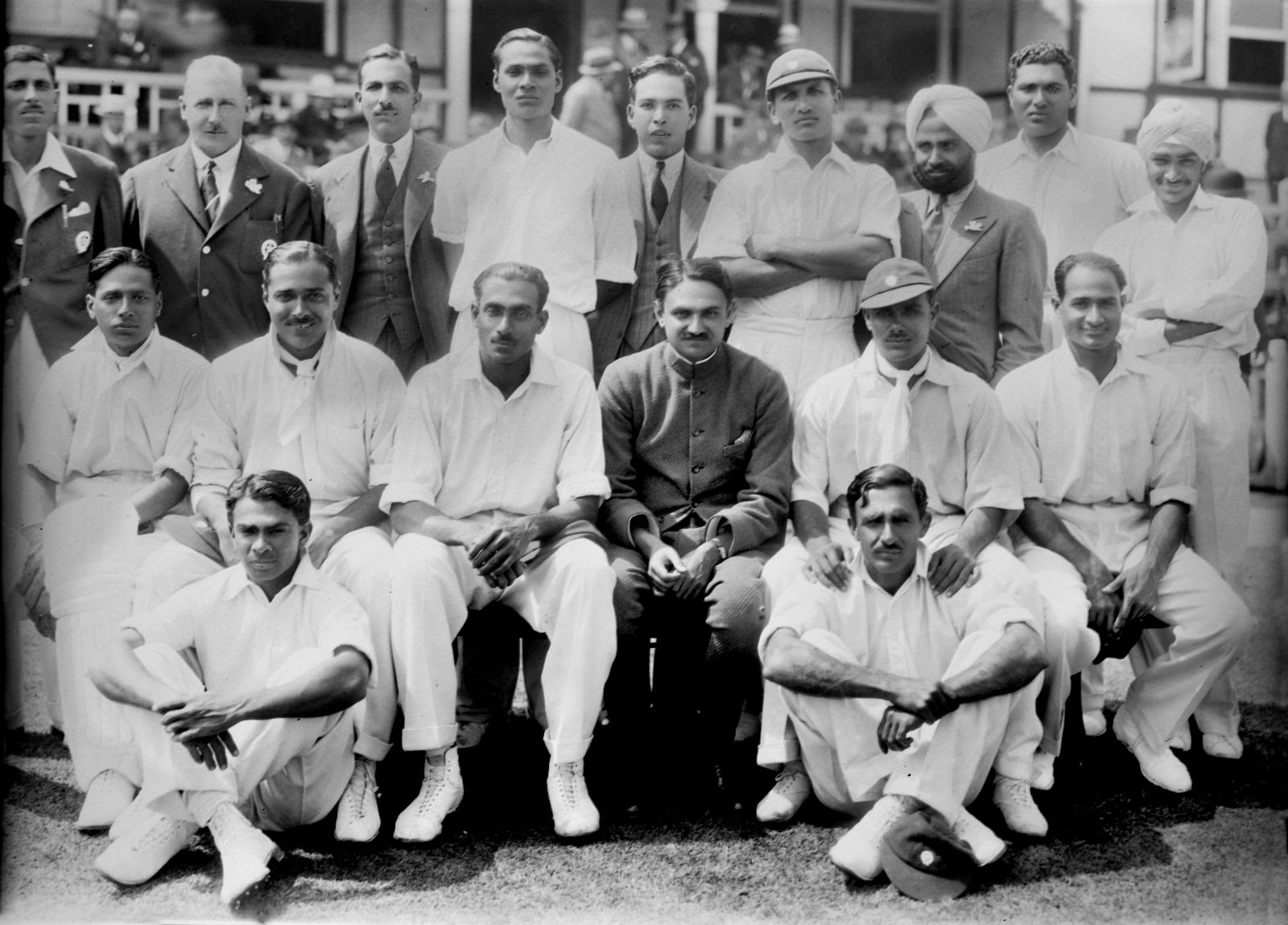
It is that time of the year when the bellow of the bugle merges with the thwack of the bat as it hits the ball and the roar of fans intensifies in packed cricket stadiums across India. As the 10th edition of the Indian Premier League gets under way in Hyderabad’s Rajiv Gandhi International Stadium, here’s a look back in time at the day when India made its memorable international cricket debut at Lord’s.
Not only did the Indian team rattle a very strong English side, it also made the small world of cricket sit up and take notice of their talent.

The journey of cricket in India began when the sport was brought to Indian shores by British traders and soldiers during colonial rule. It is believed that the first cricket match played in India was by British sailors at Cambay (Khambat in present-day Gujarat) in 1721.
The first Indians to take interest in cricket were the Parsis. They established the Oriental Cricket Club in 1846 and subsequently the Parsi Cricket Club, which sent its team to play in England in 1886 – it played in 28 matches, lost 19, drew eight and won only one.
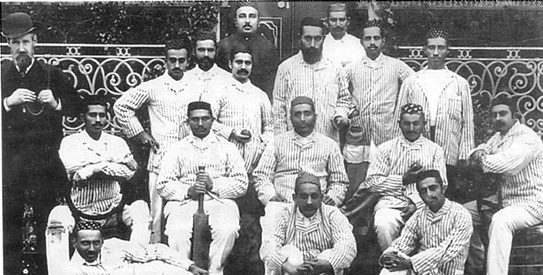
The Parsi team that toured England in 1886.
Unfamiliar with English conditions, the Parsi cricketers were not able to make much of a mark but their adaptability made an impression upon the Englishmen. The resulting appreciation led to another tour two years later.
After two more unofficial tours in 1888 and 1911 (financed and captained by the young Maharaja of Patiala, Bhupendra Singh), and within three years of the formation of the Board of Control for Cricket in India in 1928, the first official Indian team left for England to play its first ever Test match.
One of the richest patrons of Indian cricket, the Maharaja of Patiala was first named captain of the Indian team (designated ‘All India’ to emphasise the point that it was a representative team with players from all parts of the country), with Prince Ganshyamsinhji of Limbdi as vice-captain and the Maharaj Kumar of Vizianagram (better known as Vizzy) as the deputy vice-captain.
Two weeks before the team left for the tour, the Maharaja of Patiala stepped down on health grounds while the Maharaj Kumar of Vizianagram withdrew from the team citing his lack of form and fitness. The choice of captain fell upon the Maharaja of Porbandar (who, funnily enough, was undoubtedly the worst player in the team) while Jahangir Khan was drafted into the team as a replacement for Vizzy.
On April 2, 1932, as the Indian team sailed from Bombay on a mail ship, the Maharaja of Porbandar looked at receding shorelines and said the following words, “Au revoir, India, we shall bring you laurels as you wish us to.”

The 1932 Indian team that toured England to begin India’s journey in Test cricket.
Back (from left): Lall Singh, Phiroze Palia, Jahangir Khan, Mohammad Nissar, Amar Singh, Bahadur Kapadia, Shankarrao Godambe, Ghulam Mohammad, Janardan Navle.
Middle (from left): Wazir Ali, CK Nayudu, Maharaja of Porbandar (c), KS Limbdi (vc), Nazir Ali, Joginder Singh.
Front, from left: Naoomal Jaoomal, Sorabji Colah, Nariman Marshall.
Photo Source
When the Indians arrived in England on April 13, 1932, London newspaper Evening Standard made the following comment on the socio-political significance of the tour:
“No politics, no caste, just cricket. This is the unofficial slogan of the cricket team that has come from India after a lapse of 21 years. There has never been such a team of contrasts meeting on the common footing of cricket. The 18 players speak eight to 10 languages among them and belong to four or five different castes.”
While BCCI’s choice of captain was the Maharaja of Porbandar, he himself knew that he lacked the experience (he appeared in only six first-class matches) and ability to lead the team. He was relying on vice-captain Limbdi to handle the responsibility, but when Limbdi strained his back while batting in a minor match against Marylebone Cricket Club (MCC), he decided to hand over the captaincy to Cottari Kanakaiya Nayudu.
The superbly fit and strong Nayudu was India’s best batsman and had just smashed the first Indian century of the tour in style. The Star’s headline on May 22, 1932, summed it all up: “The Hindu Bradman in Form at Lord’s”.
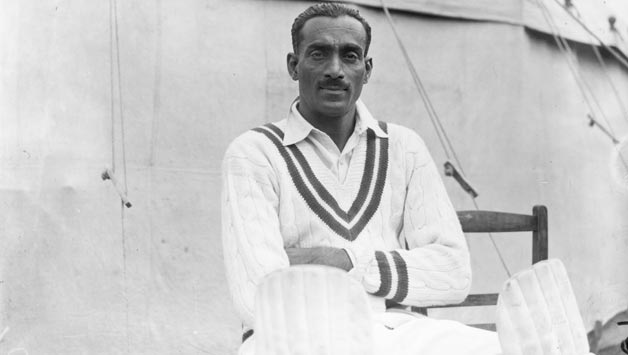
C K Nayudu
Choosing Nayudu, who would go on to be Wisden Cricketer Of The Year in 1933, as the captain of the team was thus a very wise decision by the Maharaja of Porbandar.
So, it was Nayudu who led the team onto the turf of Lord’s to face the star-studded English national side on June 25, 1932, for India’s first-ever Test appearance. The game was a three-day match that started on Saturday, with a rest day on Sunday (in those days, this was how Test Cricket was played against anyone other than Australia).
As play unfolded, the performance of the relatively raw Indian side left the English shocked in the first half-hour itself.
After winning the toss and opting for batting first, Sutcliffe and Holmes, Yorkshire’s record-smashing opening pair (they had put on 555-run partnership just nine days ago), walked out full of cool confidence.
But some excellent bowling by Indian fast bowlers, Mohammad Nissar and Amar Singh, reduced the English team to a dismal 19-3 in the first 20 minutes!
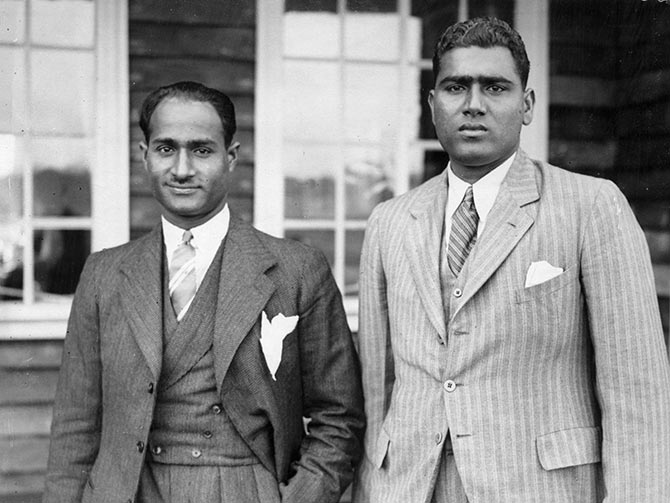
Amar Singh and Mohammad Nissar (right)
After the worst possible start, English captain Douglas Jardine and Wally Hammond began stitching together a partnership, but it was difficult with the Indians bowling with nagging accuracy and fielding with sharp agility. Hammond lost his wicket just after lunch and the English team was bowled out for 259 before tea on the first day.
Describing the day’s play, The Birmingham Post wrote: “The All India cricket team has administered a few shocks to the dignity and confidence of England today. If there were among the 24,000 spectators at Lord’s some who imagined that the granting of a Test match by the MCC to the tourists from the Indian empire was merely an amiable concession, then they had a very rude awakening before the close of play.”
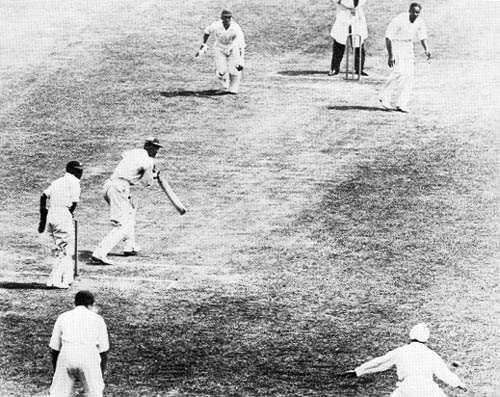
England captain Douglas Jardine bats against India at Lord’s in 1932.
At the end of their first day in International Test cricket, the Indian team stood at 30 without loss, a respectable scoreline against the formidable English side. While the next day started well for the Indians, with their score being 110 for 1 at one point, the lack of experience (other than Nayudu and Nazir Ali, all the Indian batsmen had practiced only on matting wickets) was soon exposed as the middle order collapsed. From 160 for 4, India folded to 189 all out.
However, while India eventually lost the match by 158 runs, the courage and grit shown by the team, evident in the first 30 minutes itself, clearly conveyed to the world that it wouldn’t take much time for the Indians to carve out a niche for themselves in the world of cricket.
That India’s inaugural official Test match impressed the cricketing world despite being defeated can be seen from the fact that, in the winter of 1933, the English team arrived in India to play what would go on to be the first-ever formal Test Match on Indian soil.
It was this impact that led to June 25, 1932, going down in India’s cricketing history as a red letter day. Interestingly, 51 years later on the same day, the Indian cricket team (led by Kapil Dev) made history at Lord’s by winning the Prudential Cup, as if commemorating the momentous day in Indian cricket.
Also Read: This Political Science Professor Has Led the Indian Blind Cricket Team to Three World Cup Wins!
Like this story? Or have something to share? Write to us: [email protected], or connect with us on Facebook and Twitter.
NEW: Click here to get positive news on WhatsApp!
If you found our stories insightful, informative, or even just enjoyable, we invite you to consider making a voluntary payment to support the work we do at The Better India. Your contribution helps us continue producing quality content that educates, inspires, and drives positive change.
Choose one of the payment options below for your contribution-
By paying for the stories you value, you directly contribute to sustaining our efforts focused on making a difference in the world. Together, let's ensure that impactful stories continue to be told and shared, enriching lives and communities alike.
Thank you for your support. Here are some frequently asked questions you might find helpful to know why you are contributing?


This story made me
-
97
-
121
-
89
-
167














